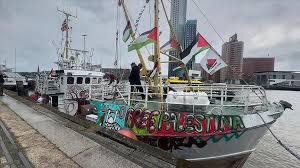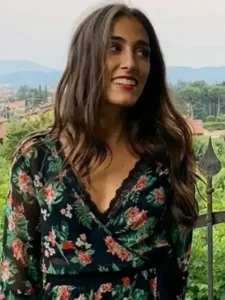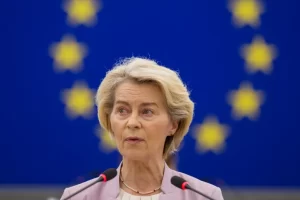The rewilding project bringing back an ancient breed of cattle to Portugal
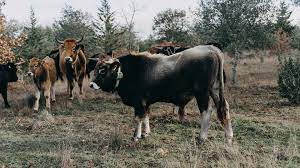
Lisbon: The tauros, a specially bred version of the long-extinct auroch cattle, is being introduced to Portugal’s Côa Valley.
On a cold, misty morning, a herd of dun-coloured Sorraia horses, an endangered local breed, graze on grass and small shrubs, their short and stocky bodies enveloped in the mist by the Côa river in the mountains of northeastern Portugal. As the sun rises and the mist starts to dissipate, it unveils the deep gorges of the Côa Valley, where vultures and eagles nest on the cliffs.
Further south, a herd of large black and chestnut cattle with long horns run with agility. Known as tauros, these bovines are a specially bred version of the long-extinct auroch, the wild ancestor of the modern cow.
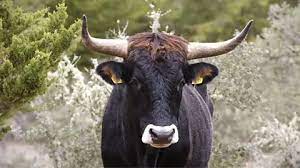
The horses and tauros were released by Rewilding Portugal, a non-profit organisation whose mission is to create a 1,200 sq km (463 sq miles) wildlife corridor along the Côa River, improving habitat connectivity between the Douro River in the north and the Malcata mountains in the south.
“We promote the coming back of wild species and replace the extinct ones, such as the auroch and the wild horse,” says Pedro Prata, the head of Rewilding Portugal. Since it was established in 2019, the organisation has released two herds of 20 Sorraia horses and 15 tauros in an area spanning about 20 sq km (7.7 sq miles) to restore natural processes with natural grazing.
Thousands of years ago, the wild ancestors of cattle and horses roamed freely across the Côa region, migrating in large herds and playing a key role in maintaining grassland ecosystems. The animals were so important that our ancestors decided to paint and engrave their images in caves and stones.

Along the Côa Valley, representations of aurochs, wild horses and other creatures dating back 24,000 years have been carved on the schist outcrops. The area boats one of the largest concentrations of Paleolithic open-air rock art, and is recognised as a Unesco World Heritage site.
With its long horns and massive body, the auroch features prominently in the engravings. Once the largest land mammals in Europe, aurochs went extinct in the 17th Century due to overhunting and habitat loss. The last of the species died in Poland in 1627; one of the first recorded cases of extinction.
But recent efforts are trying to bring back these mighty herbivores. Rewilding Portugal partnered with the Taurus Foundation, a Dutch organisation dedicated to breeding bovines that could thrive in Europe’s wild landscapes.
“We wanted to develop a substitute for what aurochs used to be,” says ecologist Ronald Goderie, director of the Taurus Foundation, who started a breeding programme in 2008. While the aurochs are extinct, their genes live on in domestic cattle.
The foundation has been using a method known as back-breeding to combine cattle breeds in southern Europe that still have some of the characteristics of their auroch ancestors: large stature, long legs, a slender build and big horns curved forward. “We combined primitive breeds to try to get the closest possible genetically to what the auroch once was,” says Goderie. The goal is to create a wild bovine that can once again roam freely and that is prepared to deal with predators.
For millennia, grazing aurochs created open spaces for other species to thrive. As the closest to the extinct auroch depicted on the prehistoric engravings, Goderie says tauros can fulfil a similar ecological function that is vital for biodiversity. “Natural grazing will lead to more natural processes that are missing from local ecosystems, more habitats and more biodiversity,” he says.
Kites hover over Prata’s jeep as he drives through a mosaic of oak and pine forests, rocky heathlands and scattered vineyards, olive and almond groves along the Côa valley, stopping occasionally to pick up his binoculars.
“This land is marginal, the soil is poor and there is a lack of water. Summers are very harsh here and will get even worse with climate change. The landscape will become even less suitable for farming,” says Prata, a biologist who grew up on a farm near the Côa river.
Production is so low on the rocky hillsides that over the last decades, many farmers abandoned the valley and it became one of the least inhabited places in Portugal. Prata also left as a young man to find better opportunities abroad. But the reasons why farming communities left were also what made Prata move back with a new vision for the region. Depopulation and land abandonment became an opportunity to bring nature back.
“We inherited a very degraded landscape. So we are proposing to let this landscape regenerate by rewilding,” says Prata. The goal is not to recreate what the landscape once was, but to tap into the potential of what it could be.
By setting aside land and releasing key species, the organisation is promoting the return of large herbivores, scavengers and predators, such as imperial eagles, vultures, Iberian wolves and ibex and the Iberian lynx – the world’s most endangered wildcat.
The initiative in Portugal is part of wider efforts led by Rewilding Europe, a non-profit established in 2011 that is supporting the coming back of wildlife and the restoration of ecological processes across the continent. Unlike traditional conservation, rewilding is not driven by human management but by natural processes.
“It’s not just about letting nature be, because there are some elements of the ecosystems missing either habitats or processes or species that are important,” says Prata. Instead, the hope is that releasing big herbivores will catalyse some of the natural processes that are missing and create the conditions which allow other species to thrive, he explains. “Large grazers are engineers. They engineer the distribution of plant species, recycle the nutrients and allow other species to use those nutrients.”
Rewilding Portugal is closely monitoring fauna and flora and is already noticing the effects of releasing horses and tauros in the region. “First, we started seeing a lot of rabbits and partridge in the areas that were grazed,” says Prata, as smaller herbivores can find protection from predators in horse and tauros herds. “Then we noticed changes in the composition of the plant species.”
As they graze and trample the soil, large herbivores redistribute seeds and nutrients and make space for other plants to sprout. The grazed areas have more flower species, attract more pollinators and more predators. Birds can feed on the insects that the cattle attract and use their fur to build nests, as studies have shown elsewhere.
Data collected by Rewilding Portugal in partnership with the University of Aveiro in Portugal has revealed an increase in roe deer populations in the region. Conservation officer Sara Aliácar says the expansion of deer and wild boar populations means there is more wild prey to sustain Iberian wolves in the region.
Studies have shown that natural grazing by large herbivores can help protect and restore vegetation mosaics with high levels of biodiversity and increase carbon sequestration. Grazers can also have an important role in mitigating the effects of climate change and reducing the risk of fire.
As temperatures rise, the Mediterranean region is experiencing longer, more common and increasingly unpredictable fire seasons, outstripping the capacity for ecosystems to recover. Rural abandonment, bush encroachment and dense pine plantations have also made the Côa valley particularly vulnerable to large-scale fires.
“Herbivores help remove the biomass, which instead of accumulating is being returned to the soil,” says Miguel Bastos Araújo, a researcher specialising in the study of climate change effects on biodiversity at the University of Evora, Portugal, and a board member of Rewilding Portugal. By eating long grass and shrubs, grazers help the carbon shift from above-the-ground vegetation to the soil, boosting carbon storage and making ecosystems more resilient to fire.
“The Côa is a natural corridor that facilitates the adaptation of species, it allows species to migrate and serves as a highway of biodiversity,” says Bastos Araújo. But Rewilding Portugal’s goal of establishing a 1,200 sq km (463 sq miles) corridor is still a long way ahead. Even though an archaeological park was established in the north of the Côa, to protect the Paleolithic engravings, and there is a nature reserve in the southern Malcata mountains, the vast majority of the land is privately owned.
“What we have at the moment is a highly fragmented landscape with a lot of fencing and private property that is an obstacle to large grazers,” says Prata. “We brought back the animals that are depicted in the engravings, but we still haven’t been able to bring back the migration to the Côa. The large migratory herds that moved through the landscape are still missing,” he says. The non-profit is buying plots of land along the Côa to establish ecological stepping stones.
To reverse the degradation of ecosystems, the European Union’s biodiversity strategy for 2030 requires member states to legally protect at least 30% of Europe’s lands and strictly protect at least 10% of the territory by the end of this decade. Reaching these targets will be challenging in Portugal, where only 3% of forest land is owned by public entities.
“We don’t have areas of strict conservation, only about 0.02% of the territory [in Portugal] is strictly protected,” says Bastos Araújo. Rewilding’s mission to acquire lands for nature conservation could help increase the country’s percentage of protected land, but Bastos Araújo says more needs to be done on a national level to reach EU conservation targets – such as state policies to acquire land to be protected, tax incentives for conservation and making sure that once a plot of land is classified as protected the status can’t change even if it’s sold to new owners.
The emissions from travel it took to report this story were 50kg CO2. The digital emissions from this story are an estimated 1.2g to 3.6g CO2 per page view. Find out more about how we calculated this figure here.
So far, Rewilding Portugal says the organisation hasn’t faced significant opposition from local communities, but the prospect of increasing the number of wolves is particularly contentious. To address concerns with potential wolf attacks, the non-profit has provided guard dogs and wolf-proof fences to local farmers to protect livestock. The local farmers’ union did not respond to BBC Future Planet’s request for comment.
“We focus on bringing the benefits of nature to people,” says Filgueiras. Rewilding, she says, can become an opportunity for a regenerated rural economy based on nature tourism and local products, and is a model that could be reproduced in other depopulated regions in Europe. In Portugal, a network of nature-based enterprises was created in the Côa Valley to promote local products and market the region as a destination for sustainable tourism.

